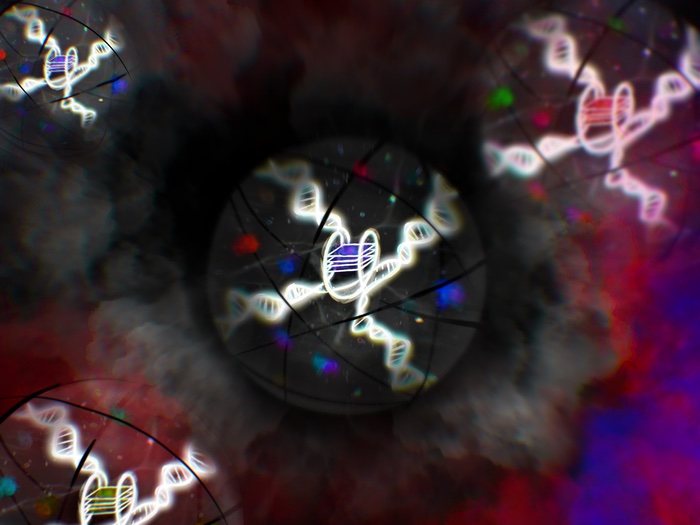Cockayne syndrome (CS) is a rare disease that causes short stature, premature aging (progeria), severe photosensitivity, and moderate to severe learning delay. A new study by researchers from the Molecular Science Research Hub at Imperial College London demonstrates how a unique form of four-stranded DNA, recently seen in human cells, has been found to interact with a gene that causes CS when faulty.
Their findings are published in the Journal of the American Chemical Society in a paper titled, “Cockayne Syndrome B Protein Selectively Resolves and Interact with Intermolecular DNA G-Quadruplex Structures.”
The researchers observed a protein called Cockayne Syndrome B (CSB) preferentially interacting with one specific type of G-quadruplex. These special G-quadruplexes arise when distant parts of DNA interact, something that researchers thought was impossible to form within cells.
“Guanine-rich DNA can fold into secondary structures known as G-quadruplexes (G4s),” the researchers wrote. “G4s can form from a single DNA strand (intramolecular) or from multiple DNA strands (intermolecular), but studies on their biological functions have been often limited to intramolecular G4s, owing to the low probability of intermolecular G4s to form within genomic DNA.
“Herein, we report the first example of an endogenous protein, CSB, that can bind selectively with picomolar affinity toward intermolecular G4s formed within rDNA while displaying negligible binding toward intramolecular structures. We observed that CSB can selectively resolve intermolecular over intramolecular G4s, demonstrating that its selectivity toward intermolecular structures is also reflected at the resolvase level.”
The researchers discovered CSB proteins with mutations that cause CS are no longer able to interact with the long-range G-quadruplexes.
“Our genomic DNA is more than two meters long, but is compressed into a space only a few microns in diameter,” explained lead researcher Marco Di Antonio, PhD, from the department of chemistry at Imperial. “It shouldn’t, therefore, be a surprise that there are ways the long-range looped structures are leveraged to compress DNA in more complex interactions than we imagined.”
“There is still so much we don’t know about DNA, but our results show that how and where G-quadruplex structures form affects their function, making them more important biologically than previously thought.”
The mutated form of CSB that causes CS was found to be attracted to G-quadruplexes that link distant DNA portions. This could mean further study of the mutated CSB gene might reveal the specific biological function of these long-range DNA structures.
“There is currently no cure for Cockayne Syndrome,” explained first author of the study Denise Liano, a PhD student in the department of chemistry at Imperial. “But with further study into how G-quadruplexes and the gene behind Cockayne Syndrome interact we can learn details that will hopefully allow us to discover therapeutic tools, such as designer molecules that can regulate the interaction and fight back against the premature aging caused by the disease.”



